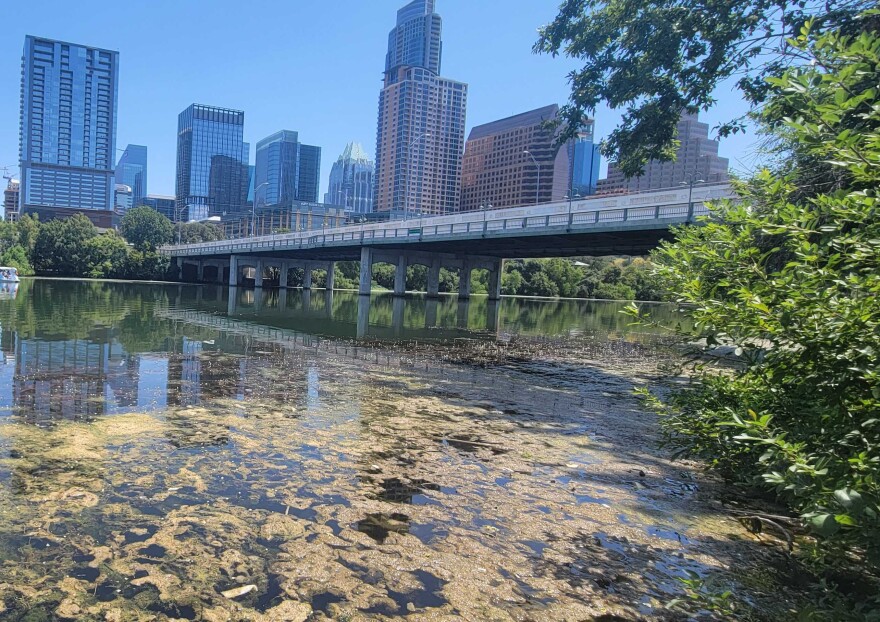If you’ve been near Austin’s Lady Bird Lake lately you might have noticed a little less water is visible. Parts of the lake, especially along the shores and inlets, are covered in mats of green vegetation. It can look goopy, maybe even dangerous, given the presence of toxic blue-green algae in local waterways.
But most of what you’re seeing is not only harmless, it’s a sign of a thriving body of water, says Dr. Brent Bellinger, a scientist with Austin’s Watershed Protection Department who monitors the lake.
Bellinger says the majority of the vegetation these days is a native water plant called fanwort or cabomba, and it's one of the few plants that flower underwater. You can spot their delicate looking blooms from shore with a careful eye.
Cabomba is present in the lake year-round, but is more likely to grow to the surface, or become detached from the lake bottom and float, in the summer once it has grown to maturity.
Within that cabomba you can find a complex habitat for other plants, insects and animals seeking shelter and food — almost like a kelp forest.

“You'll see a lot of fish, turtles that are mixed in with the plants. There's carnivorous plants [called] bladder wort,” says Bellinger, who met KUT by a cluster of floating cabomba on a recent sweltering morning. “The health of the ecosystem goes up with the presence of these plants.”
There has been more vegetation, including cabomba, in the lake in recent years. That’s due to drought, heat and nutrient-rich runoff from fertilizer, septic waste and other sources.
The runoff provides food for vegetation, the drought means there have been no big storms to “flush” the vegetation out and the heat has warmed up the water.
“In general, biology accelerates with warmer temperatures, plant growth, algae growth, etcetera," Bellinger says. "All these things are going to be [growing] at a higher rate in these warmer waters."
He says the harmless plants, like cabomba, are actually helping the waterway, by gobbling up excess nutrients that could otherwise encourage more algae growth.
But, he warns, the lake is still home to blue-green algae, also known as toxic cyanobacteria. So, even if most of the stuff you see on the water is harmless, the city urges boaters or paddleboarders to avoid areas of high vegetation.
“Stick to the open water, stay away from the margins in the backwaters,” Bellinger says.









